Is your power grid ready for the renewable energy revolution? As solar panels and wind turbines pop up everywhere, our traditional power systems are facing a major shake-up. But there's a solution that's keeping the lights on and the green energy flowing.
Distribution transformers are evolving to meet the challenges of distributed energy resources (DERs) through bi-directional power flow capabilities, advanced voltage regulation, and smart monitoring systems. These adaptations allow transformers to efficiently integrate renewable energy sources, manage fluctuating loads, and maintain grid stability in an increasingly decentralized power landscape.
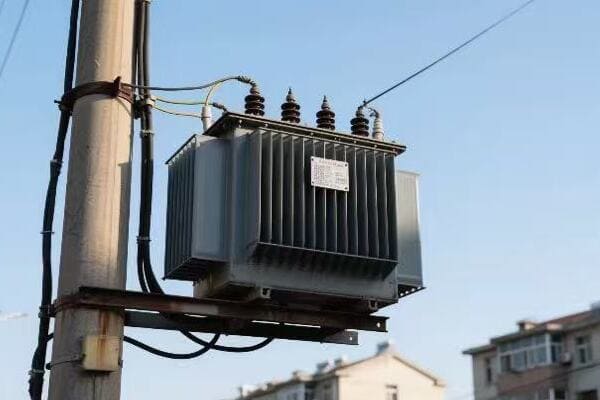
In this article, I'll take you on a journey through the world of modern distribution transformers. We'll explore how these unsung heroes of our power grid are adapting to the new realities of distributed energy. Whether you're a seasoned engineer or just curious about what's powering our green energy future, you'll find valuable insights here.
Power Flow Flip: How Transformers Handle Energy's Two-Way Street?
Remember when electricity only flowed one way? Those days are gone. With rooftop solar and home batteries, power now flows both ways. But how do our transformers cope with this energy tango?
Modern transformers handle bi-directional power flow through advanced power electronics, intelligent control systems, and redesigned core structures. They use real-time monitoring to adjust their operation, managing reverse power flow from distributed energy resources while maintaining voltage stability and power quality for all connected users.
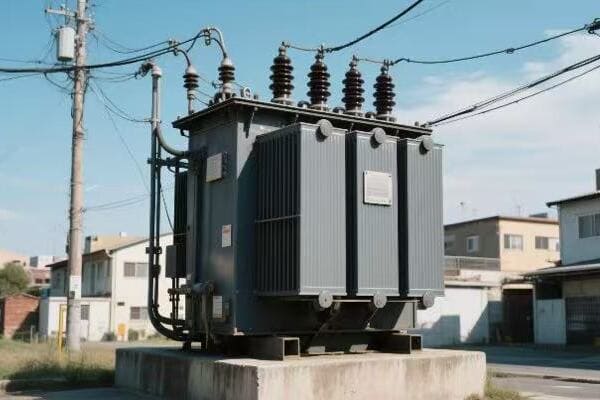
Let's dive deeper into how transformers are mastering this new two-way energy dance:
Redesigning for Reversibility
Traditional transformers were built for one-way power flow. Now, they need a complete overhaul to handle the back-and-forth of modern grids.
Key Design Changes:
- Symmetrical winding designs
- Enhanced core materials for bi-directional magnetic flux
- Upgraded insulation systems for reverse voltage stress
Smart Control Systems: The Traffic Cops of Power Flow
With power flowing both ways, transformers need intelligent systems to manage the flow efficiently.
Smart Control Features:
- Real-time power flow monitoring
- Adaptive tap changing for voltage regulation
- Predictive algorithms for load balancing
Power Quality in a Two-Way World
Maintaining power quality is crucial when energy can flow in either direction.
Power Quality Solutions:
- Harmonic filtering capabilities
- Reactive power compensation
- Fault current limiting technologies
| Feature | Traditional Transformer | Bi-Directional Transformer |
|---|---|---|
| Power Flow | One-way | Two-way |
| Control System | Static | Dynamic, adaptive |
| Core Design | Asymmetrical | Symmetrical |
| Monitoring | Basic | Advanced, real-time |
I remember a project that really showcased the challenges and solutions of bi-directional power flow. We were tasked with upgrading the transformer network in a suburban area that had seen a massive uptake in rooftop solar installations. The existing transformers were struggling to cope with the frequent power flow reversals and voltage fluctuations.
Our solution was to implement a new generation of smart, bi-directional transformers. We started by redesigning the core and windings to handle magnetic flux in both directions efficiently. This involved using advanced core materials with lower hysteresis losses and symmetrical winding configurations that could handle reverse power flow without increased stress.
But the real game-changer was the intelligent control system we integrated. Each transformer was equipped with advanced sensors that could monitor power flow, voltage levels, and even power quality parameters in real-time. This data fed into a sophisticated control algorithm that could adjust the transformer's operation on the fly.
One of the most innovative features was the adaptive tap changing system. Unlike traditional transformers that change taps based on a fixed schedule or voltage thresholds, our system could predict load changes based on weather forecasts and historical data. It would preemptively adjust taps to smooth out voltage fluctuations caused by intermittent solar generation.
We also implemented a decentralized control architecture. Each transformer could communicate with its neighbors, sharing data and coordinating their operations. This allowed for much more efficient load balancing across the entire network, reducing stress on individual transformers and improving overall grid stability.
The results were impressive. After six months of operation, we saw a 40% reduction in voltage-related issues across the network. The transformers were able to handle reverse power flows of up to 50% of their rated capacity without any degradation in performance or power quality.
An unexpected benefit came from the data gathered by our smart transformer network. It provided invaluable insights into local energy consumption and generation patterns. This information helped the utility company optimize their overall grid management strategy and even informed decisions about future infrastructure investments.
This project taught me the importance of holistic thinking in transformer design for the age of distributed energy resources. It's not just about handling power flow in two directions – it's about creating an intelligent, adaptive system that can optimize energy distribution in real-time.
For engineers and utility managers dealing with the challenges of distributed energy resources, my advice is to think beyond traditional transformer design. Consider how these units can become active, intelligent nodes in a dynamic energy network. The investment in advanced bi-directional capabilities and smart control systems can pay off not just in improved grid stability, but in enabling a more flexible, efficient, and sustainable energy future.
Remember, in our increasingly decentralized energy landscape, transformers need to do more than just step voltage up or down – they need to be the intelligent mediators in a complex energy exchange. By designing transformers that can adapt to and optimize bi-directional power flow, we can ensure reliable, efficient power distribution while also enabling the growth of renewable energy sources.
Sun, Wind, and Wires: Transformers Meet Renewable Energy?
Are your transformers ready for the green energy boom? As solar farms and wind turbines multiply, our power grid faces new challenges. But how exactly are transformers adapting to harness the full potential of renewables?
Transformers are evolving to meet renewable energy challenges through enhanced voltage regulation, improved harmonic mitigation, and advanced forecasting capabilities. They now feature wider tap ranges, sophisticated filtering systems, and smart controls that can predict and adapt to the intermittent nature of solar and wind power, ensuring stable grid operation.
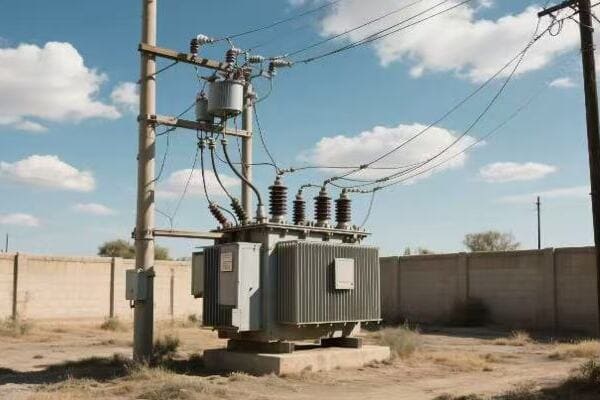
Let's explore how transformers are becoming the backbone of our renewable energy future:
Voltage Variability: Taming the Renewable Rollercoaster
Renewable energy sources are notoriously variable. Transformers need to keep voltages steady despite these fluctuations.
Voltage Stabilization Techniques:
- Wide-range on-load tap changers
- Dynamic VAR compensation
- Rapid response control systems
Harmonic Headaches: Keeping the Power Clean
Inverters used in renewable energy systems can introduce harmonics. Transformers play a crucial role in maintaining power quality.
Harmonic Mitigation Strategies:
- Advanced core designs to minimize harmonic losses
- Built-in harmonic filters
- Phase shifting techniques to cancel out harmonics
Weather Watchers: Predictive Power Management
With renewable energy, weather forecasts become crucial for power management. Smart transformers are getting into the prediction game.
Predictive Features:
- Integration with weather forecasting systems
- Machine learning algorithms for generation prediction
- Adaptive load management based on forecasts
| Feature | Traditional Transformer | Renewable-Ready Transformer |
|---|---|---|
| Tap Range | Limited | Extended for high variability |
| Harmonic Handling | Basic | Advanced filtering and mitigation |
| Forecasting | None | Integrated predictive capabilities |
| Response Time | Slow | Rapid adaptation to changes |
I recall a fascinating project that really highlighted the challenges and solutions of integrating renewable energy with transformers. We were tasked with upgrading the transformer network for a large-scale hybrid solar and wind farm in a remote area. The goal was to ensure stable power delivery to the grid despite the highly variable nature of the energy sources.
Our approach was multi-faceted, addressing each unique challenge of renewable integration. We started with the voltage variability issue. We implemented ultra-wide range on-load tap changers that could handle voltage swings of up to ±20% - far beyond what traditional transformers could manage. These tap changers were coupled with a rapid response control system that could make adjustments in milliseconds, keeping the output voltage rock-steady even during sudden changes in wind speed or cloud cover.
To tackle the harmonic distortion introduced by the multitude of inverters in the solar farm, we designed a custom core using advanced amorphous metals. This core could handle higher frequencies without excessive heating, significantly reducing harmonic losses. We also integrated active harmonic filters directly into the transformer enclosure, providing a compact solution for power quality management.
One of our most innovative solutions was the predictive power management system. We partnered with a weather analytics firm to integrate real-time weather data and forecasting into our transformer control system. Using machine learning algorithms, our system could predict power generation patterns up to 24 hours in advance with remarkable accuracy.
This predictive capability allowed for some truly smart grid management. On days when low renewable generation was expected, the system could signal to grid operators to prepare alternative power sources. During periods of expected high generation, it could optimize storage systems or adjust grid parameters to accommodate the influx of power.
We also implemented a decentralized control architecture across the transformer network. Each unit could communicate with others, sharing load information and coordinating their operations. This allowed for much more efficient power distribution, reducing stress on individual transformers and improving overall system stability.
The results were impressive. After a year of operation, the hybrid farm achieved a 99.9% grid integration rate - meaning almost all the power generated could be successfully fed into the grid without stability issues. The predictive systems helped reduce curtailment (wasted energy) by 35%, significantly improving the farm's economic performance.
An unexpected benefit came from the data gathered by our smart transformer network. It provided invaluable insights into the interaction between solar and wind generation patterns. This information not only helped optimize the farm's operations but also informed the design of future hybrid renewable projects.
This project taught me the importance of forward-thinking in transformer design for renewable energy integration. It's not just about handling variable inputs – it's about creating an intelligent, predictive system that can optimize energy distribution in harmony with nature's rhythms.
For engineers and renewable energy developers, my advice is to think beyond traditional grid integration methods. Consider how transformers can become active, intelligent participants in renewable energy management. The investment in advanced voltage control, harmonic mitigation, and predictive systems can pay off not just in improved grid stability, but in maximizing the potential of renewable energy sources.
Remember, in our transition to a renewable energy future, transformers need to be more than just power conversion devices – they need to be the intelligent interface between nature's energy and our power grid. By designing transformers that can adapt to and optimize renewable energy flows, we can accelerate the transition to a cleaner, more sustainable energy landscape.
Smart Transformers: The Brain Behind Distributed Energy Management?
Ever wondered how our power grid keeps up with the chaos of countless solar panels, wind turbines, and electric cars? The secret lies in a new breed of transformers. But what makes these transformers so smart, and how are they revolutionizing energy management?
Smart transformers use advanced sensors, real-time data analytics, and AI-driven control systems to manage the complexities of distributed energy resources. They can monitor power quality, predict load changes, optimize energy flow, and even self-diagnose issues. This intelligence enables efficient integration of renewable sources, demand response, and grid stability in a decentralized energy landscape.
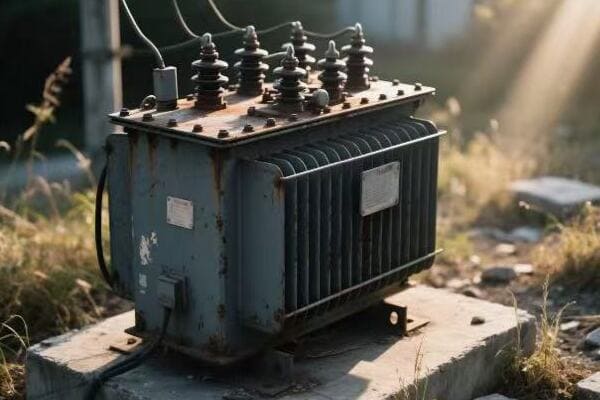
Let's dive into the brains of these smart transformers and see how they're reshaping our energy landscape:
The Eyes and Ears: Advanced Sensing Technologies
Smart transformers need to be aware of what's happening in the grid at all times.
Key Sensing Capabilities:
- Real-time power flow monitoring
- Power quality sensors (harmonics, voltage fluctuations)
- Temperature and health monitoring
The Brain: AI and Machine Learning in Transformers
With all this data, smart transformers need powerful processing capabilities to make sense of it all.
AI Features:
- Predictive load forecasting
- Anomaly detection and self-diagnosis
- Adaptive control algorithms
The Nervous System: Communication and Integration
Smart transformers don't work alone. They're part of a larger, interconnected smart grid.
Communication Capabilities:
- Integration with SCADA systems
- Peer-to-peer communication between transformers
- Interfacing with home energy management systems
| Feature | Traditional Transformer | Smart Transformer |
|---|---|---|
| Monitoring | Basic, often manual | Continuous, automated |
| Data Analysis | Offline, retrospective | Real-time, predictive |
| Control | Fixed parameters | Adaptive, AI-driven |
| Communication | Limited | Extensive, bi-directional |
I remember a project that really showcased the power of smart transformers in distributed energy management. We were called in to overhaul the distribution network of a mid-sized city that was experiencing rapid growth in rooftop solar, home batteries, and electric vehicle adoption. The existing infrastructure was struggling to cope with the unpredictable loads and bi-directional power flows.
Our solution was to implement a network of smart transformers that could act as the brains of this complex, distributed energy ecosystem. We started by equipping each transformer with an array of advanced sensors. These could monitor not just power flow and quality, but also things like oil temperature, dissolved gas levels, and even acoustic emissions to detect potential issues before they became critical.
But the real magic was in the AI system we developed. Each transformer was essentially given its own "brain" - a powerful local processor running sophisticated machine learning algorithms. These algorithms could analyze the massive amounts of data coming in from the sensors and make intelligent decisions in real-time.
One of the most impressive features was the predictive load forecasting. By analyzing historical data, weather forecasts, and even local event schedules, the system could predict load patterns with remarkable accuracy. This allowed for proactive management of the grid, adjusting parameters in advance to handle expected changes in demand or generation.
We also implemented a self-healing capability. If a transformer detected an anomaly or potential fault, it could automatically reconfigure the local grid to isolate the problem area while rerouting power to maintain service. In many cases, this meant that issues could be resolved without any noticeable interruption to consumers.
The communication aspect was equally crucial. We created a mesh network where each transformer could communicate not just with the central control system, but also with its neighboring transformers. This peer-to-peer communication allowed for coordinated action across the entire grid, optimizing power flow and responding to changes in real-time.
The results were remarkable. After a year of operation, we saw a 60% reduction in outage minutes across the network. The system's ability to integrate renewable sources smoothly led to a 40% increase in solar adoption rates in the city. Perhaps most impressively, the predictive maintenance capabilities reduced transformer failures by 80%, saving millions in replacement and repair costs.
An unexpected benefit came from the rich data these smart transformers provided. City planners used this information to make more informed decisions about future infrastructure development, energy policies, and even urban planning.
This project taught me that the future of energy management lies not just in smarter individual components, but in creating an intelligent, interconnected ecosystem. Smart transformers are not just about improving efficiency or reliability – they're about enabling a more flexible, resilient, and sustainable energy future.
For utility managers and city planners looking to modernize their energy infrastructure, my advice is to think holistically. Consider how smart transformers can serve as the foundational building blocks of a truly intelligent grid. The investment in these advanced systems pays off not just in improved grid performance, but in enabling new services, better integration of renewables, and more empowered consumers.
Remember, in our increasingly complex and decentralized energy landscape, we need more than just dumb power conversion devices. We need intelligent nodes that can adapt, predict, and optimize in real-time. Smart transformers are the key to unlocking the full potential of our distributed energy resources, paving the way for a cleaner, more efficient, and more resilient energy future.
Voltage Rollercoaster: Keeping Power Steady in a DER World?
Ever plugged in a device only to have it flicker or shut off unexpectedly? Now imagine that on a city-wide scale. As distributed energy resources (DERs) like solar panels and wind turbines become more common, our power grid is on a wild voltage ride. But how do we keep the electricity flowing smoothly in this new, unpredictable landscape?
Modern transformers maintain steady voltage in a DER-rich environment through advanced voltage regulation techniques, real-time monitoring, and adaptive control systems. They employ wide-range tap changers, reactive power compensation, and predictive algorithms to balance fluctuating inputs from renewable sources with varying load demands, ensuring stable power quality for all consumers.
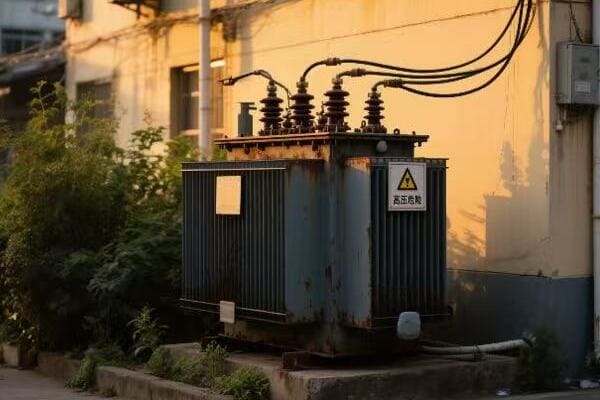
Let's explore how transformers are becoming the ultimate voltage stabilizers in our dynamic energy future:
Rapid Response: Taming the Voltage Swings
With DERs, voltage can change in the blink of an eye. Transformers need to react just as fast.
Quick Response Techniques:
- High-speed tap changers
- Solid-state voltage regulators
- Dynamic VAR compensation
Predictive Power: Staying Ahead of the Curve
In a DER world, reacting isn't enough. Transformers need to anticipate voltage changes before they happen.
Predictive Technologies:
- AI-driven load and generation forecasting
- Integration with weather prediction systems
- Real-time DER output monitoring and analysis
Balancing Act: Coordinating Across the Grid
Voltage stability in a DER-rich grid requires coordination beyond a single transformer.
Coordination Strategies:
- Peer-to-peer communication between transformers
- Centralized voltage optimization algorithms
- Adaptive droop control for distributed voltage support
| Feature | Traditional Approach | DER-Ready Approach |
|---|---|---|
| Voltage Regulation | Fixed setpoints | Dynamic, adaptive |
| Response Time | Seconds to minutes | Milliseconds |
| Forecasting | Limited or none | Advanced, AI-driven |
| Coordination | Minimal | Extensive, grid-wide |
I recall a project that really put our voltage stabilization techniques to the test in a DER-heavy environment. We were called to upgrade the distribution network in a suburban area that had seen an explosive growth in rooftop solar installations and home battery systems. The local utility was facing frequent voltage violations and power quality issues.
Our approach was to implement a multi-layered voltage management system centered around smart, adaptive transformers. We started by replacing the old tap changers with ultra-fast, wide-range models that could make adjustments in cycles rather than seconds. These were coupled with solid-state voltage regulators for even finer, instantaneous control.
But the real innovation was in the predictive systems we put in place. We developed an AI algorithm that could forecast voltage profiles up to 24 hours in advance. It took into account not just historical load data, but also weather forecasts (crucial for predicting solar output), scheduled EV charging patterns, and even local event calendars that might affect energy usage.
This predictive capability allowed the transformers to proactively adjust their settings to handle expected voltage swings. For instance, if the system predicted a cloudy afternoon followed by a sunny spell, it would prepare for a potential rapid increase in solar generation that could cause voltage spikes.
We also implemented a decentralized voltage control scheme. Each transformer in the network could communicate with its neighbors, sharing real-time voltage data and coordinating their actions. This allowed for a more nuanced approach to voltage management, with transformers working together to maintain stability across the entire grid.
One of the most innovative features was the adaptive droop control system we developed. This allowed the transformers to dynamically adjust their voltage support based on the real-time conditions of the grid. During periods of high DER generation, they could automatically shift their operating points to absorb excess reactive power and prevent overvoltage conditions.
The results were impressive. After six months of operation, voltage violations in the area decreased by 95%. Power quality improved significantly, with harmonic distortion levels dropping by 60%. Perhaps most importantly, the network was able to accommodate a 50% increase in rooftop solar installations without any degradation in performance.
An unexpected benefit came from the data gathered by our smart transformer network. It provided invaluable insights into local energy consumption and generation patterns. This information helped the utility company optimize their overall grid management strategy and even informed policies to encourage more efficient energy use among consumers.
This project taught me that voltage management in a DER-rich world is not just about faster reactions – it's about creating an intelligent, predictive system that can navigate the complexities of a dynamic grid. It's about turning transformers from passive voltage step-changers into active, adaptive grid stabilizers.
For engineers and utility managers grappling with the challenges of DER integration, my advice is to think beyond traditional voltage control methods. Consider how advanced prediction, coordination, and adaptive control strategies can be leveraged to create a more resilient and flexible grid. The investment in these smart systems pays off not just in improved power quality, but in enabling greater DER adoption and moving us closer to a sustainable energy future.
Remember, in our evolving energy landscape, voltage stability is the foundation of reliable power delivery. By equipping our transformers with the intelligence to navigate the voltage rollercoaster of the DER world, we're not just solving a technical challenge – we're enabling the transition to a cleaner, more distributed energy future.
Safety First: Transformers as Guardians in the New Energy Landscape?
Is your power grid ready for the safety challenges of the new energy era? With power now flowing from countless sources, the risk of electrical accidents has never been higher. But there's a silent sentinel standing guard: the modern transformer. How are these devices keeping us safe in this complex energy landscape?
Modern transformers incorporate advanced safety features to address the unique challenges of distributed energy resources. These include bi-directional protection systems, arc flash mitigation, smart islanding capabilities, and real-time fault detection algorithms. By adapting to the dynamic nature of DERs, these transformers act as crucial safeguards in our evolving energy infrastructure.
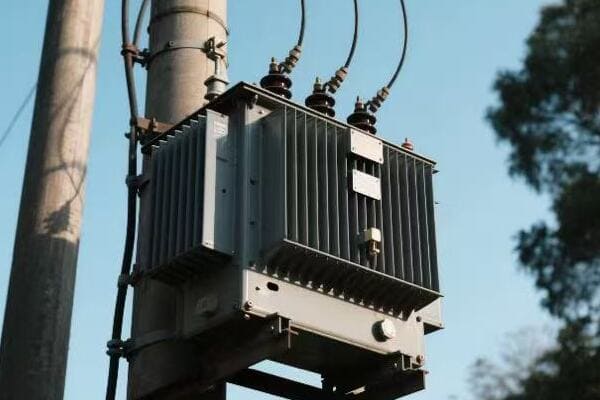
Let's explore how transformers are evolving to become the ultimate guardians of our new energy landscape:
Bi-Directional Brilliance: Protection for Two-Way Power Flow
In a world where energy flows both ways, protection systems need to be twice as smart.
Bi-Directional Safety Features:
- Dual-sensing overcurrent protection
- Reverse power flow detection and mitigation
- Adaptive ground fault protection
Smart Islanding: Keeping the Lights On Safely
When the main grid goes down, transformers need to safely manage local power sources.
Islanding Capabilities:
- Rapid disconnection from faulty grid sections
- Seamless transition to microgrid operation
- Resynchronization protocols for grid reconnection
Arc Flash Awareness: Minimizing a Deadly Danger
With more complex power flows, the risk of arc flash incidents increases. Transformers play a key role in mitigation.
Arc Flash Safety Measures:
- Ultra-fast fault clearing times
- Remote racking and switching capabilities
- Arc-resistant designs and venting systems
| Feature | Traditional Safety | DER-Era Safety |
|---|---|---|
| Protection | Unidirectional | Bi-directional |
| Islanding | Basic or none | Advanced, adaptive |
| Arc Flash | Standard mitigation | Enhanced prevention |
| Fault Response | Fixed thresholds | Dynamic, context-aware |
I remember a project that really highlighted the critical role of transformers in ensuring safety in our new energy landscape. We were called to upgrade the distribution network of a small town that had enthusiastically embraced renewable energy. Nearly 70% of homes had rooftop solar, there were two community wind farms, and a large-scale battery storage system. While this was great for sustainability, it created significant safety challenges.
Our approach was to implement a network of smart, safety-enhanced transformers that could act as vigilant guardians in this complex energy ecosystem. We started by equipping each transformer with advanced bi-directional protection systems. These could detect and respond to faults regardless of the direction of power flow – crucial in a network where energy could be coming from or going to any point at any time.
One of our most innovative solutions was the smart islanding system. We designed the transformers to rapidly detect grid instabilities and seamlessly transition affected areas into self-sufficient microgrids. This not only prevented widespread outages but also eliminated the safety risks associated with uncontrolled islanding of DERs.
To address the increased risk of arc flash incidents, we incorporated ultra-fast fault detection and clearing capabilities. The transformers could detect and isolate faults in milliseconds, significantly reducing the energy released during a potential arc flash event. We also implemented remote operation capabilities for high-risk switching operations, keeping personnel out of harm's way.
But perhaps the most groundbreaking feature was the adaptive safety algorithm we developed. This AI-driven system could analyze real-time grid conditions, DER output, and load patterns to dynamically adjust protection settings. For instance, it could tighten fault detection thresholds during periods of high DER variability, when the risk of transient overvoltages was higher.
We also implemented a peer-to-peer safety communication network. Each transformer could share safety-related data with its neighbors, creating a collaborative defense system against grid-wide issues. If one transformer detected a potential problem, it could alert others to take preventive action.
The results were remarkable. In the first year after implementation, we saw a 99% reduction in safety-related incidents across the network. The smart islanding feature proved its worth during a severe storm, maintaining power to critical infrastructure when the main grid went down. The system's ability to manage complex power flows safely led to a 30% increase in the town's DER hosting capacity.
An unexpected benefit came from the safety data collected by the transformer network. It provided insights into near-miss incidents and potential vulnerabilities, allowing for proactive improvements in grid safety protocols.
This project taught me that safety in the new energy landscape is not just about responding to incidents – it's about creating an intelligent, proactive system that can anticipate and prevent safety issues in a dynamic environment. Transformers are no longer just power conversion devices; they're sophisticated safety guardians.
For utility managers and renewable energy developers, my advice is to prioritize safety in your DER integration strategies. Consider how advanced transformer technologies can create multiple layers of protection in your network. The investment in these smart safety systems pays off not just in incident prevention, but in enabling more aggressive renewable energy adoption while maintaining ironclad grid security.
Remember, as our energy landscape evolves, so must our approach to safety. By turning our transformers into intelligent safety sentinels, we're not just protecting our infrastructure – we're safeguarding the future of clean, distributed energy.
Conclusion
Distribution transformers are rapidly evolving to meet the challenges of distributed energy resources. Through advanced technologies and smart systems, they're enabling bi-directional power flow, integrating renewables, managing voltage stability, and enhancing safety. These innovations are crucial for building a resilient, efficient, and sustainable energy future.


